When it comes to choosing the right siding for your home, I know how overwhelming the options can be. That’s why I decided to explore James Hardie siding, a brand that’s been making waves in the industry.
In this review, I’ll share my insights on why James Hardie siding might just be the perfect choice for your home. From durability to aesthetic appeal, I’ll cover everything you need to know to make an informed decision.
Why Consider James Hardie Siding?
As a homeowner, you want siding that not only enhances your home’s appearance but also stands the test of time. James Hardie siding has become a popular choice for many, and here’s why:
- Durability You Can Trust
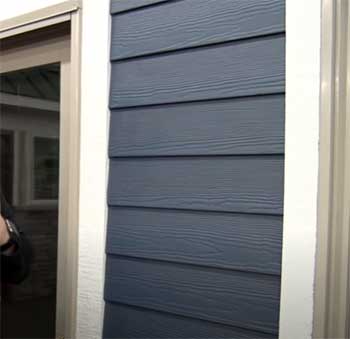
One of the standout features of James Hardie siding is its exceptional durability.
Made from fiber cement, it resists cracking, warping, and splitting, which are common issues with traditional wood siding.
This means fewer repairs and a longer lifespan for your home’s exterior.
During the years I’ve researched and spoken with homeowners who have chosen James Hardie, durability consistently ranks as the top benefit.
Its ability to withstand harsh weather conditions, from heavy snow to intense sun, without losing its integrity is impressive.
- Aesthetic Versatility
James Hardie offers a wide range of styles and colors, allowing you to customize the look of your home to match your personal taste. Whether you prefer the classic look of lap siding or the intricate design of shingles, there’s an option for you.
The extensive palette of colors is another plus, as it allows your home to stand out or blend in with the surrounding environment, depending on your preference.
The realistic wood textures available also give your home a timeless, elegant appearance that mimics the natural beauty of wood without the associated maintenance hassles.
- Low Maintenance Requirements
Unlike wood siding, which requires regular painting and upkeep, James Hardie siding is designed to withstand the elements with minimal maintenance. This is a huge plus for busy homeowners who want their home to look great without constant attention.
The factory-applied coatings are engineered to resist fading, chipping, and cracking, ensuring that your home maintains its curb appeal with little effort on your part. Cleaning is straightforward—typically just an occasional wash with soap and water to remove dirt and debris.
- Energy Efficiency
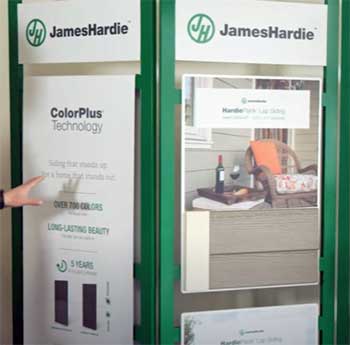
Fiber cement siding can contribute to your home’s energy efficiency by providing an extra layer of insulation.
This can help keep your home cooler in the summer and warmer in the winter, potentially lowering your energy bills.
While not a substitute for proper insulation, James Hardie siding complements existing insulation by creating a more stable exterior environment.
Some of their siding products also include additional features like vapor barriers, which enhance moisture control and thermal performance.
- Fire Resistance
Another significant advantage of James Hardie siding is its fire-resistant properties. In areas prone to wildfires or with strict building codes regarding fire safety, this feature can be a lifesaver.
Fiber cement siding has a non-combustible composition, which means it won’t ignite or contribute to the spread of fire. This added protection can provide peace of mind, knowing that your home has an extra layer of defense against potential fire hazards.
Pros of James Hardie Siding
Having used James Hardie siding on my own home, I can confidently share the benefits I’ve experienced:
- Longevity: James Hardie siding is built to last. With proper installation, it can last up to 50 years or more, making it a worthwhile investment for your home. I’ve spoken with several homeowners who have surpassed the 20-year mark without significant issues, attributing this longevity to the high-quality materials and construction of the siding.
- Resistance to Elements: Whether you live in a rainy, snowy, or sunny area, James Hardie siding stands up to harsh weather conditions without deteriorating. This resilience is particularly important in regions with extreme weather patterns. For example, homeowners in coastal areas appreciate its resistance to salt air corrosion, while those in colder climates value its ability to prevent moisture ingress that can lead to rot or mold.
- Fire Resistance: For those concerned about fire safety, James Hardie siding offers excellent fire resistance, providing peace of mind and an added layer of protection for your home. This feature is especially valuable in areas prone to wildfires, where building materials that can resist fire spread are crucial for safety and insurance purposes.
- Pest Resistant: Unlike wood, fiber cement is not susceptible to termites, carpenter ants, or other pests that can damage your siding and, subsequently, your home. This pest resistance means fewer worries about infestations and the associated damage, saving you time and money on pest control and repair.
- Eco-Friendly: James Hardie siding is made from sustainable materials, and the manufacturing process is designed to minimize environmental impact, making it a greener choice for eco-conscious homeowners. The product is composed primarily of cement, sand, and cellulose fibers, which are sourced responsibly. Additionally, the durability of James Hardie siding means less frequent replacement, reducing waste over the lifespan of your home.
- Enhanced Property Value: Installing James Hardie siding can increase your home’s market value. Potential buyers often recognize and appreciate the quality and durability that James Hardie offers, making your home more attractive on the real estate market. This investment can pay off significantly if you decide to sell your home in the future.
- Customizable Design: The ability to customize the design of your siding with James Hardie is a major advantage. You can choose from a variety of profiles, textures, and colors to create a unique look that complements your home’s architecture and your personal style. This level of customization allows your home to stand out in your neighborhood.
Cons of James Hardie Siding
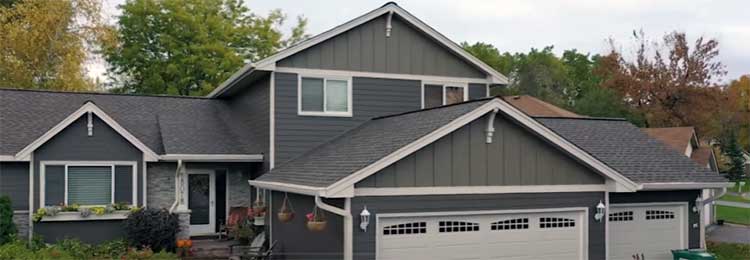
While James Hardie siding has many advantages, it’s important to consider the potential drawbacks:
- Cost: James Hardie siding can be more expensive upfront compared to other siding options like vinyl or traditional wood. However, considering its longevity and low maintenance, it can be a cost-effective choice in the long run. The higher initial investment is offset by fewer repairs, less frequent repainting, and a longer lifespan, which can save you money over time.
- Installation Complexity: Installing James Hardie siding requires professional expertise. The fiber cement material is heavy and requires precise handling to ensure proper installation, which can add to the overall cost. Attempting to install it yourself without the necessary skills and tools can lead to mistakes that compromise the siding’s performance and durability.
- Limited Color Changes: While James Hardie offers a variety of colors, once you choose a color, changing it can be more involved compared to other materials like vinyl, which are easier to repaint or replace. This means that your color choice is more permanent, and altering the appearance of your home would require more effort and expense.
- Potential for Chipping: Although durable, the paint on James Hardie siding can chip over time, especially in high-traffic areas or areas exposed to harsh weather. Regular maintenance can mitigate this issue, but it’s something to be aware of. Chipping can detract from the overall appearance of your home and may require touch-ups or repainting to maintain a pristine look.
- Slower to Install: The installation process for James Hardie siding can be more time-consuming than other materials, which might be a consideration if you’re on a tight schedule. The precision required for cutting and fitting the fiber cement panels can extend the installation timeline, especially for larger homes or complex designs.
- Heavy Material: The weight of James Hardie siding means that your home’s structure must be able to support it. In some cases, additional reinforcement may be necessary, adding to the overall cost and complexity of the installation process.
How To Get The Most Out of James Hardie Siding?
One of the main reasons I chose James Hardie siding was its low maintenance requirements. However, to truly get the most out of it, here are some maintenance tips:
- Regular Cleaning: Keeping your siding clean helps maintain its appearance and longevity. I recommend washing your siding at least once a year with a mild detergent and water to remove dirt, mold, and mildew. Use a soft brush or cloth to gently scrub the surface, avoiding abrasive materials that could scratch or damage the siding. For more stubborn stains, a mixture of water and vinegar can be effective without being harsh on the material.
- Inspect for Damage: Periodically check your siding for any signs of damage, such as cracks, chips, or warping. Addressing these issues early can prevent more extensive repairs down the line. Pay special attention to areas around windows, doors, and corners, where damage is more likely to occur due to increased stress and movement.
- Repainting When Necessary: While James Hardie siding is designed to hold paint well, over time, the paint may fade or chip. Repainting your siding every 10-15 years can keep it looking fresh and protect it from the elements. When repainting, choose high-quality exterior paint that is compatible with fiber cement to ensure proper adhesion and durability. Consider using a primer specifically designed for fiber cement to enhance the longevity of your new paint job.
- Proper Installation: Ensuring your siding is installed correctly is crucial for its performance. I highly recommend hiring a professional with experience in installing fiber cement siding to avoid potential issues like moisture infiltration or improper fastening. Proper installation includes using the correct fasteners, sealing all joints and seams, and ensuring adequate ventilation behind the siding to prevent moisture buildup.
- Sealant Maintenance: If your siding includes any sealants or caulking, make sure they are intact and not deteriorating. Reapplying sealant as needed can help maintain the siding’s resistance to moisture and other environmental factors. Inspect sealant lines around windows, doors, and other openings regularly, and replace any that show signs of wear or cracking.
- Gutter Maintenance: Keeping your gutters clean and properly maintained helps prevent water from pooling around your siding, which can lead to moisture damage over time. Regularly remove leaves, debris, and other obstructions from your gutters and downspouts to ensure proper water flow away from your home.
- Avoid Harsh Chemicals: When cleaning, use gentle cleaning solutions. Harsh chemicals can degrade the siding material and reduce its lifespan. Stick to mild detergents and avoid using bleach or other corrosive substances unless necessary for mold or mildew removal, and even then, use them sparingly.
- Prompt Repairs: If you notice any damage or signs of wear, address them promptly. Small issues like chipped paint or minor cracks can be repaired before they escalate into larger, more costly problems. Keeping up with repairs helps maintain the structural integrity and appearance of your siding.
- Professional Inspections: Consider having a professional inspection of your siding every few years. A trained inspector can identify potential issues that you might overlook and provide recommendations for maintenance or repairs to keep your siding in top condition.
Comparison of James Hardie Siding With Other Brands
Choosing the right siding involves comparing different brands and materials. Let’s take a closer look at how James Hardie stacks up against some of its competitors in more detail.
James Hardie Vs. Continental Siding
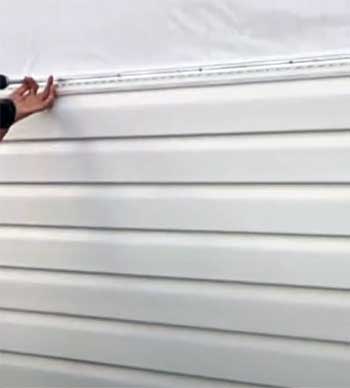
- Durability: Both James Hardie and Continental Siding offer robust solutions, but James Hardie often takes the lead with its fiber cement composition, which provides superior resistance to cracking, warping, and pests. Continental Siding, while durable, primarily focuses on wood-based products, making it more susceptible to issues like rot and termite damage over time.
- Aesthetics: James Hardie shines with its extensive range of styles and colors, allowing homeowners to achieve a variety of looks from traditional to modern. Continental Siding also offers a wide array of wood finishes and styles, appealing to those who prefer the natural beauty of wood. However, James Hardie’s options tend to mimic high-end materials more closely without the associated maintenance.
- Maintenance: James Hardie requires less maintenance compared to Continental’s wood siding. While Continental siding needs regular sealing and painting to protect against the elements, James Hardie’s factory-applied coatings are designed to last longer with minimal upkeep, saving you time and effort.
- Cost: Upfront, Continental Siding can be more affordable, especially for wood enthusiasts. However, considering the ongoing maintenance costs of wood siding, James Hardie may prove to be more cost-effective in the long run due to its durability and low maintenance requirements.
James Hardie Vs. CraneBoard Siding
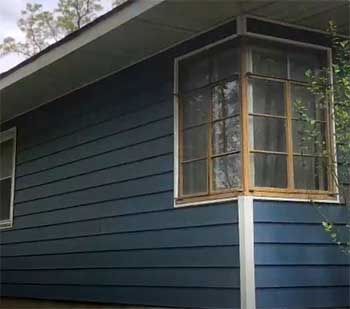
- Durability: CraneBoard Siding, known for its composite board solutions, offers impressive durability with resistance to moisture and pests. However, James Hardie’s fiber cement still holds an edge in terms of overall resilience and longevity, especially in extreme weather conditions.
- Aesthetics: CraneBoard provides a sleek, modern look with clean lines and a variety of finishes that appeal to contemporary homeowners. James Hardie, on the other hand, offers both traditional and modern styles, making it versatile for different architectural designs. If you’re aiming for a specific aesthetic, both brands have strong offerings, but James Hardie’s wider palette might provide more flexibility.
- Maintenance: Both brands boast low-maintenance products, but James Hardie’s siding typically requires less frequent attention. CraneBoard’s composites are designed to resist staining and fading, yet James Hardie’s pre-painted options with durable coatings might offer longer-lasting color retention with fewer touch-ups needed.
- Cost: CraneBoard can be competitive in pricing, especially for large projects where composite boards might offer savings. James Hardie, while sometimes pricier upfront, delivers exceptional value through its durability and extended lifespan, potentially offering better long-term savings.
James Hardie Vs. Nichiha Siding
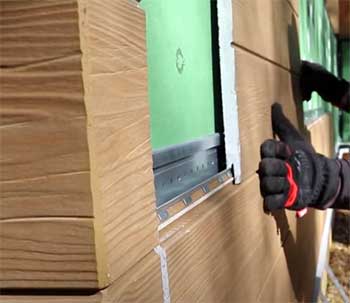
- Durability: Nichiha Siding, a prominent player in the fiber cement market, provides products that are highly durable and resistant to various weather conditions. James Hardie, being a leader in the industry, often surpasses Nichiha in terms of extensive testing and proven performance in diverse climates.
- Aesthetics: Nichiha offers a range of styles and finishes similar to James Hardie, with a focus on both traditional and contemporary designs. However, James Hardie typically has a broader selection of colors and textures, allowing for greater customization to match specific design preferences.
- Maintenance: Both brands offer low-maintenance siding options, but James Hardie’s siding is renowned for its long-lasting factory finishes that reduce the need for frequent repainting. Nichiha also provides durable finishes, but homeowners might find James Hardie’s coatings to be slightly more resilient against fading and chipping.
- Cost: Nichiha Siding is often priced competitively, making it an attractive option for those seeking quality fiber cement without the premium price tag. James Hardie, while sometimes more expensive, justifies the cost with its superior durability, extensive warranty options, and broader aesthetic choices, which can enhance property value more significantly.
Frequently Asked Questions (FAQ)
While James Hardie siding offers numerous benefits, there are some downsides to consider. The initial cost can be higher compared to other siding materials like vinyl or traditional wood. Installation is more complex and typically requires professional expertise, which can add to the overall expense. Additionally, while durable, the paint on Hardie siding can chip over time, necessitating repainting every decade or so. Finally, color changes can be more involved compared to materials that are easier to repaint or replace.
In my experience, James Hardie siding is worth the investment. Its durability, low maintenance requirements, and aesthetic appeal provide excellent value over time. Although the upfront cost is higher, the long lifespan and resistance to weather, pests, and fire can save you money on repairs and replacements in the long run. If you’re looking for a high-quality siding option that enhances your home’s appearance and stands the test of time, James Hardie siding is definitely worth considering.
One of the main challenges with fiber cement board siding has been its susceptibility to moisture damage if not properly installed or maintained. While fiber cement is inherently resistant to rot and pests, improper installation can lead to moisture infiltration, causing the material to swell or degrade over time. Additionally, fiber cement siding can be heavy and brittle, making it prone to cracking or breaking during installation or in extreme weather conditions. Ensuring proper installation and regular maintenance is crucial to overcoming these issues.
James Hardie siding is designed to last for decades, with a life expectancy of up to 50 years or more when properly installed and maintained. Its fiber cement composition ensures resistance to common issues like rot, pests, and weather damage, contributing to its longevity. Regular maintenance, such as cleaning and repainting when necessary, can help maximize the lifespan of Hardie siding, ensuring your home remains protected and looking great for many years.
Wrapping Up
After thoroughly reviewing James Hardie siding, I believe it’s a top-tier choice for homeowners seeking durability, aesthetic flexibility, and long-term value.
While the initial investment may be higher, the benefits far outweigh the costs, making it a smart option for enhancing and protecting your home. If you’re ready to invest in siding that combines beauty with resilience, James Hardie siding is definitely worth considering.
